What Is Deforestation?
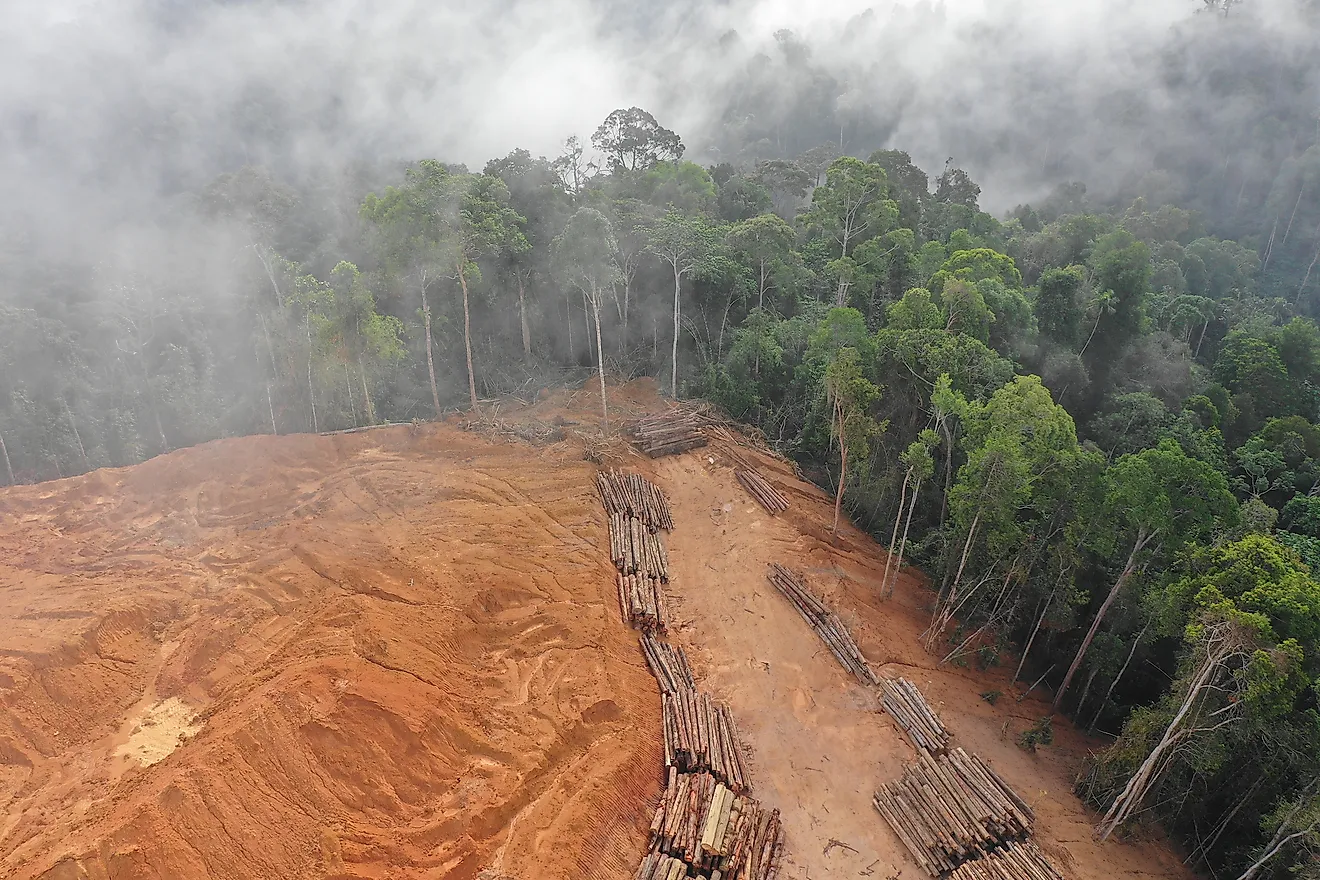
Forests cover about 31% of the earth’s total land surface and provide many environmental benefits including the preservation of biodiversity, conservation of soil, and mitigation of climate change. Over half of the world’s population relies on forested watersheds for their drinking water and agricultural and industrial purposes. According to the World Bank, more than 1.6 billion people are dependent on forests for their livelihoods and about 300 million people live in the forests, which also serves as a home for more than half of the global terrestrial species. However, forests around the world are facing severe threats due to several anthropogenic activities. It has been estimated by the Food and Agriculture Organization that about 7.4 million hectares of the world’s forest are being lost due to deforestation every year.
Content:
What Is Deforestation?
The Food and Agriculture Organization (FAO) defines deforestation as the permanent conversion of the world’s forest areas to other non-forested land uses such as agriculture, animal grazing, urbanization, as well as to obtain wood for fuel, manufacturing, and construction activities.
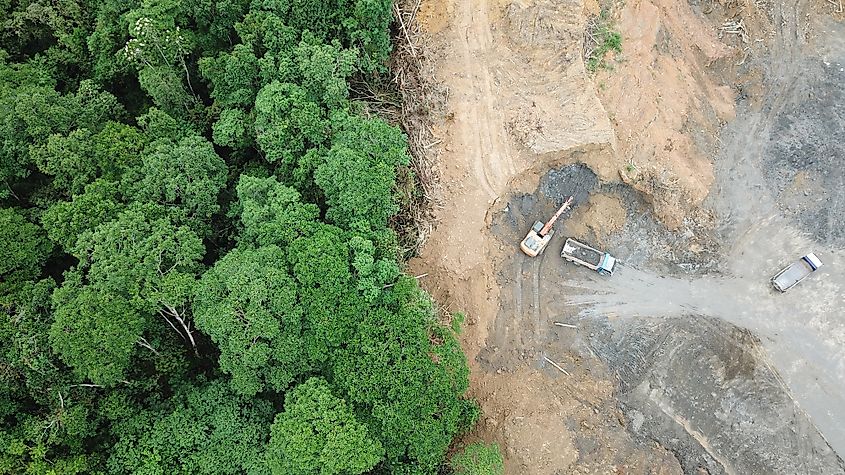
The greatest amount of deforestation has been occurring in the tropical rainforests, where the forests are being cut down at a rate of 30 soccer pitches (approximately 1.32 acres) every minute. Tropical rainforests harbor much of the world’s biodiversity and hence deforestation in these areas is of particular concern. Thus, deforestation is currently one of the most critical environmental problems faced by mankind that also have long term social, economic, and ecological consequences. It has been found that if the current rate of deforestation continues unabatedly, then the world’s rainforest could completely vanish in about 100 years.
Causes Of Deforestation
The main causes of global deforestation are as follows:
- Agricultural Expansion
- Conversion Of Forests For Infrastructure And Human Settlements
- Logging And Mining
- Overgrazing
- Forest Fires
- Climate Change
Agricultural Expansion
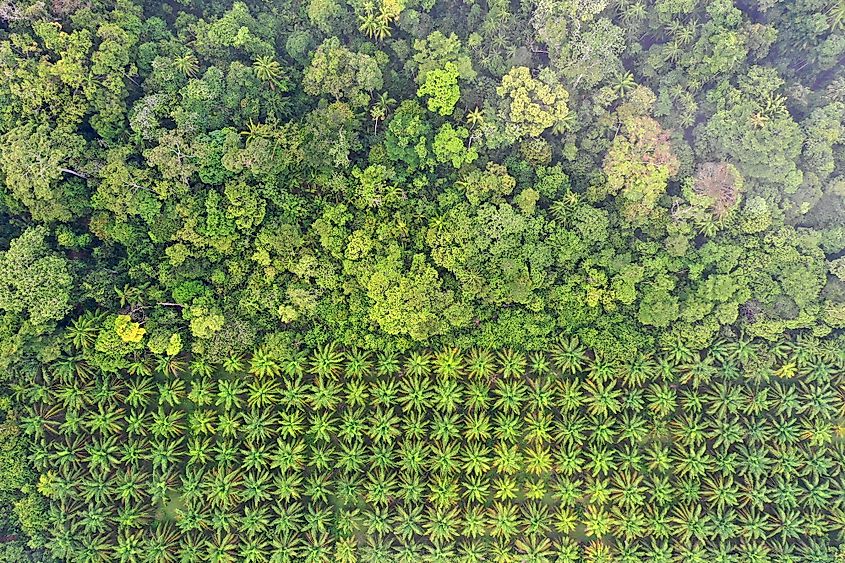
Deforestation occurs when large forested areas are cleared for agriculture and grazing of livestock. According to a report by the United Nations Framework Convention on Climate Change (UNFCC), about 48% of deforestation is caused by subsistence farming, about 32% by commercial agriculture, about 14% by logging, and about 5% by removal of fuelwood. Much of the deforestation is also caused due to slash-and-burn agriculture, which includes the cutting and burning of forests to clear land for agricultural use.
Conversion Of Forests For Infrastructure And Human Settlements
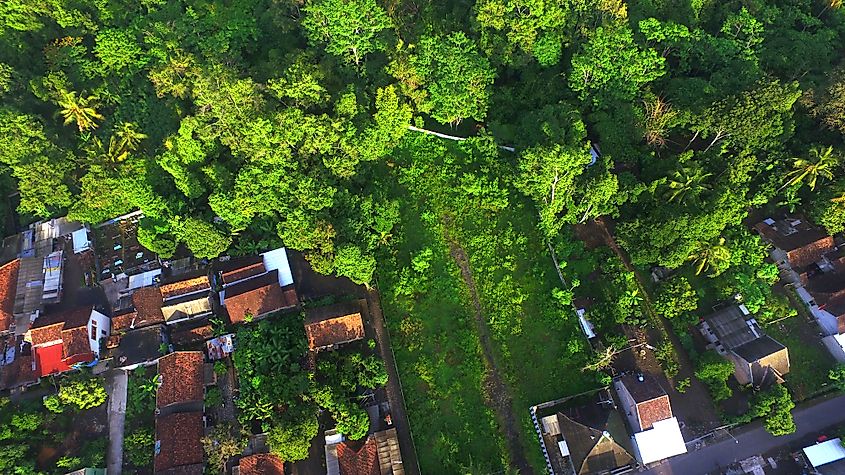
Large areas of forests have also been cleared for building roads, railways, dams, and other infrastructure and for constructing housing and settlements for the burgeoning human population. To keep pace with the growing global population, the use of forest land is expected to expand further and put significant pressure on the vulnerable tropical forests.
Logging And Mining
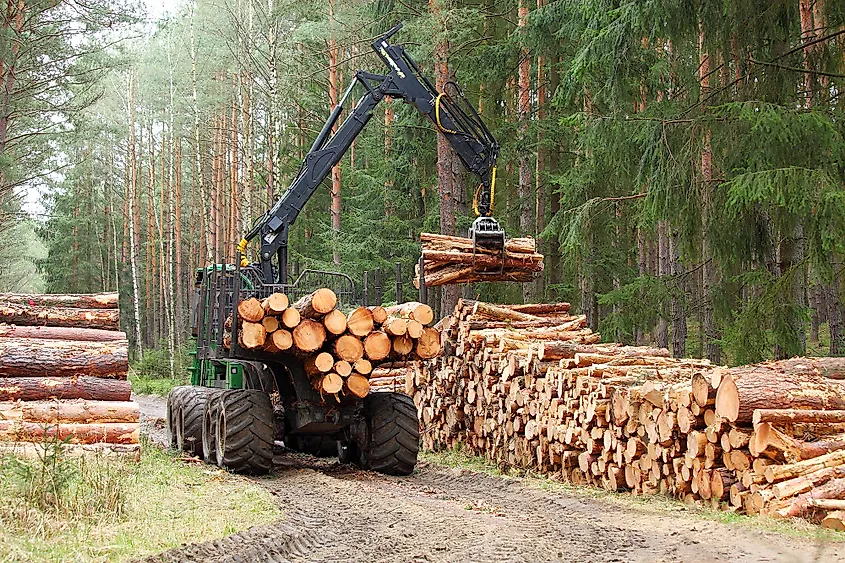
Illegal Logging accounts for over 80% of all logging activities which includes the harvesting and sale of timber, and different products such as matchsticks, paper, and furniture. It has been reported that about 380,000 hectares of forest land are annually cut to meet the increased global demand for wood and wood products. The high demand for fuelwood (charcoal) has also been a major cause of deforestation and forest degradation in the drier tropical areas.
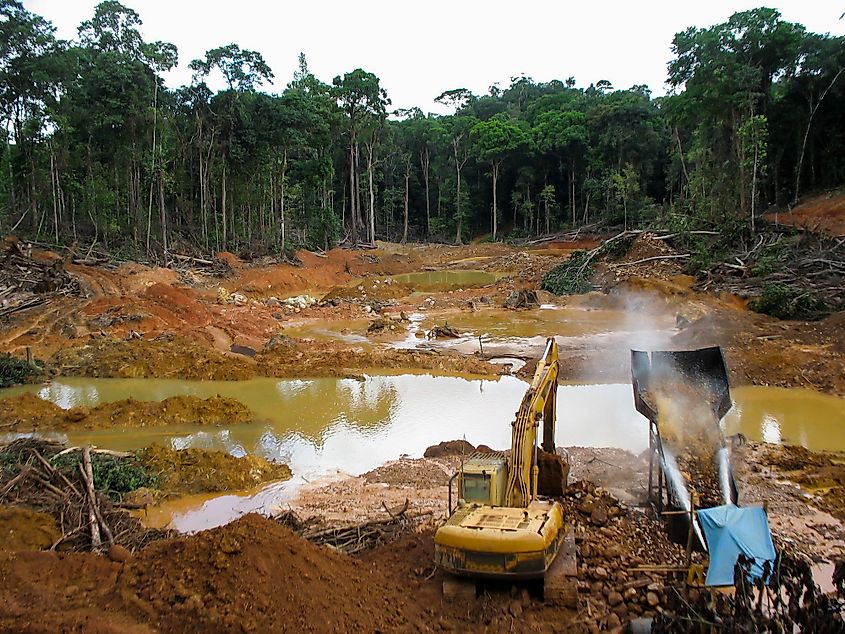
There has also been an increase in mining on tropical forests due to the rising demands and high mineral prices. These projects are accompanied by the development of massive infrastructure such as the construction of roads, railways, and power stations, which significantly amplifies deforestation.
Overgrazing
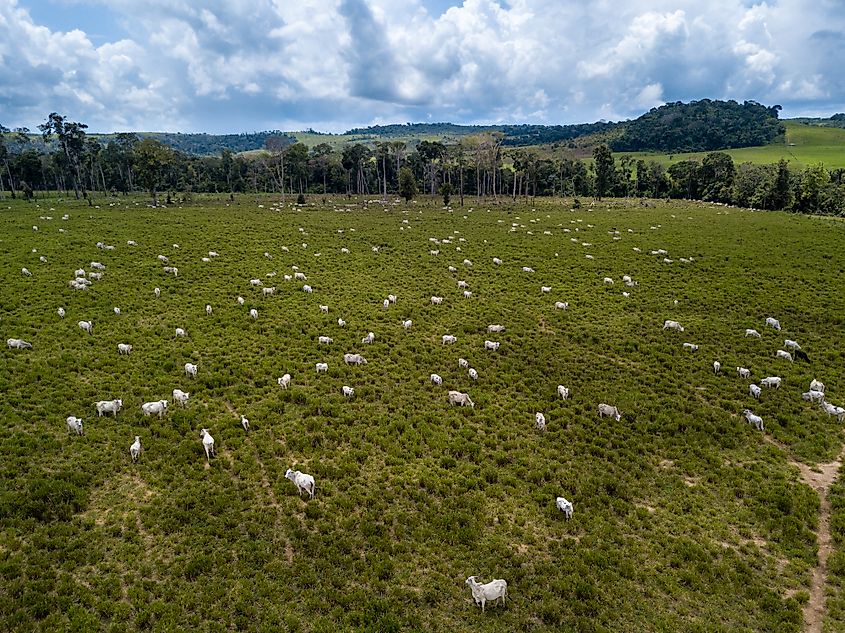
The uncontrolled and indiscriminate rearing and grazing of cattle also lead to the degradation of forests. Overgrazing also accelerates soil erosion, resulting in the removal of minerals and nutrients from the topsoil, thereby transforming the grasslands into desert.
Forest Fires
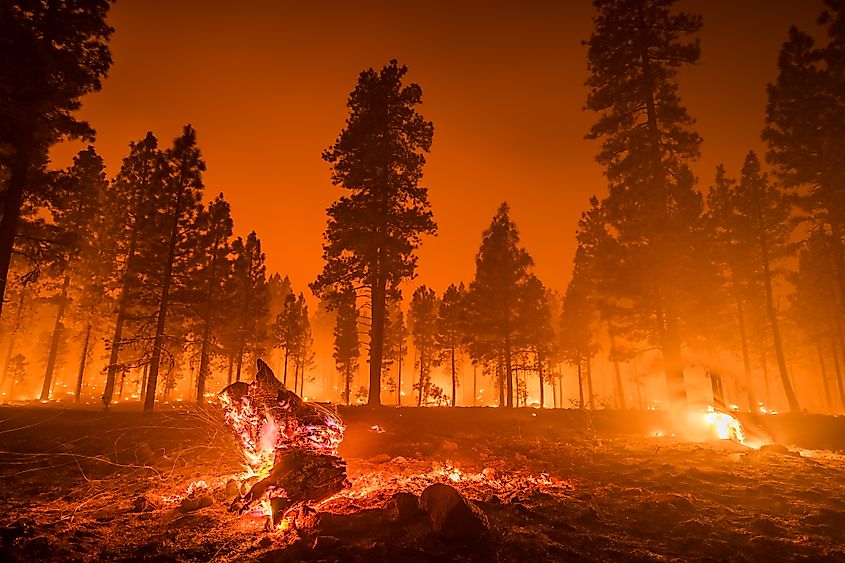
Whether caused due to human activities or by natural events, forest fires destroy large areas of forest, every year. The forest composition also changes due to forest fires. In 2020, devastating fires engulfed vast tracts of the Amazon rainforest in South America. Most of these fires were started by people to clear forest land for agriculture or cattle ranchin activities. The fires soon became uncontrollable and engulfed vast tracts of forested land.
Climate Change
Increased frequency of extreme weather events like droughts and storm surges due to anthropogenic climate change, leads to the destruction of millions of hectares of forest every year. Wildfires, disease, floods, cyclones, etc., resulting from climate change often destroy thousands of trees resulting in deforestation.
Effects Of Deforestation
The negative consequences of deforestation are as follows:
- Climate Imbalance
- Disruption Of The Hydrologic Cycle
- Drought
- Soil Erosion And Flooding
- Decreased Biodiversity And Habitat Loss
- Loss Of Valuable Medicines
- Rise In Zoonotic Diseases
- Disruption Of Livelihoods
Climate Imbalance
Deforestation is the key driver of climate change and accounts for over 20% of the greenhouse gas emissions. The forests act as carbon sinks, sequestering carbon dioxide and releasing oxygen. As the trees are cut down, the sequestered carbon dioxide is released back into the atmosphere, subsequently leading to an increase in the level of greenhouse gases in the atmosphere and a net increase in the global temperature. It has been estimated by scientists that about 1.5 billion tons of carbon are annually released into the atmosphere due to deforestation. The loss of trees would also impact the microclimate as oxygen levels would go down, leading to an increase in the heat and pollution levels.
Disruption Of The Hydrologic Cycle
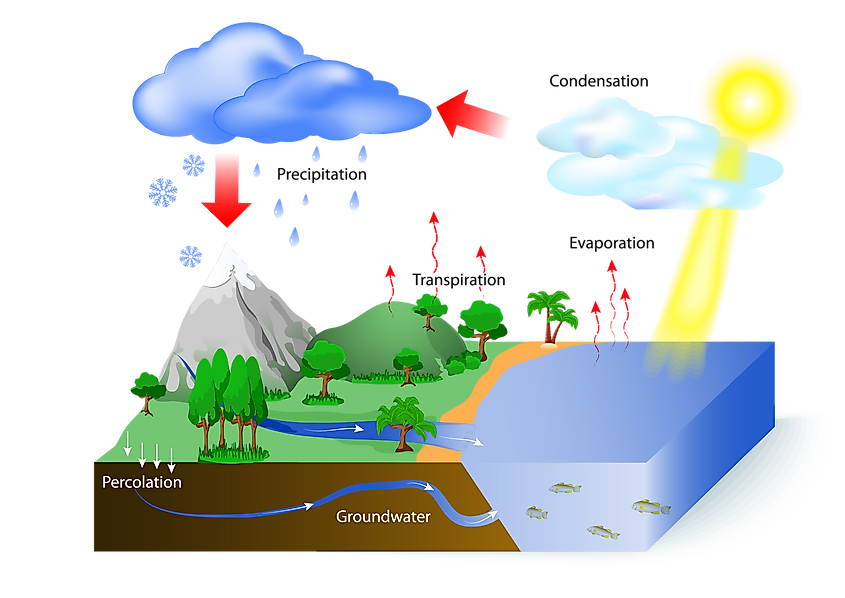
Trees help to regulate the moisture content in the atmosphere. The macropores in their roots also allow deeper penetration of water, thereby increasing the water-retention capacity of the soil. The loss of trees dramatically alters the local hydrological cycles, leading to drier and warmer conditions.
Drought
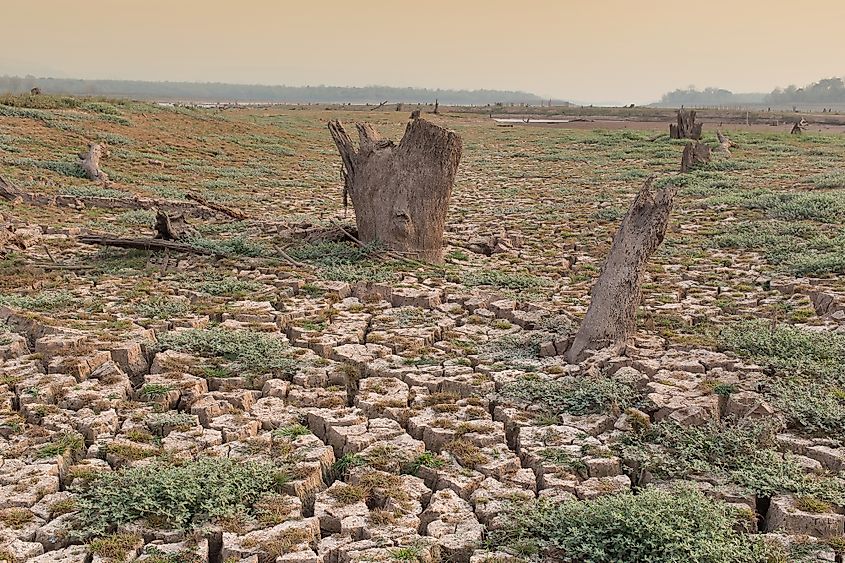
Deforestation leads to reduced humidity and a decline in groundwater levels. The hot weather and the changing rainfall pattern make the area too dry, resulting in drought, desertification, and crop failures.
Soil Erosion And Flooding
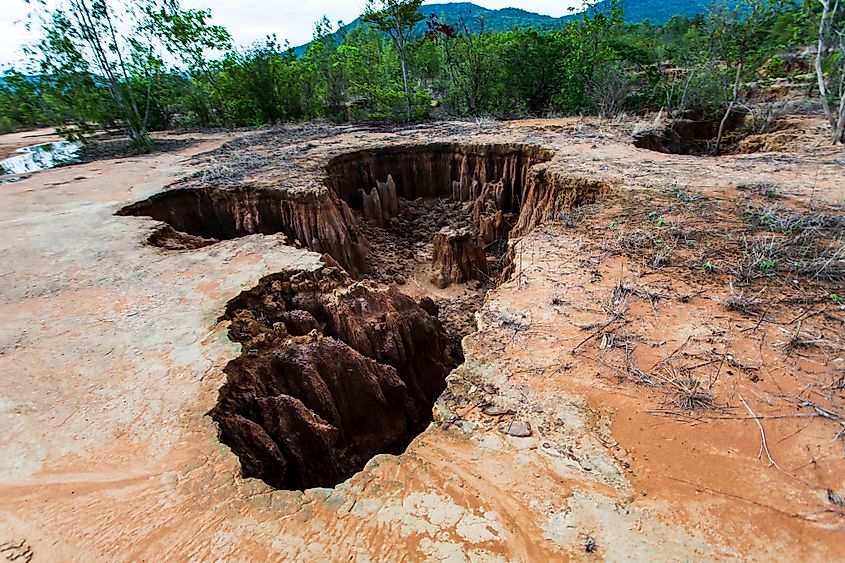
The roots of the trees firmly hold back the humus-rich topmost layer of the soil and help it to stay firmly in place. Deforestation leads to the widespread erosion of this precious topsoil, leaving the sterile land more prone to flooding and desertification. The removal of trees also causes the sloped lands to be more prone to landslides.
The reduction in forest cover, leads to an increase in the surface water runoff, elevating the river levels and resulting in more flooding in the downstream areas.
Decreased Biodiversity And Habitat Loss
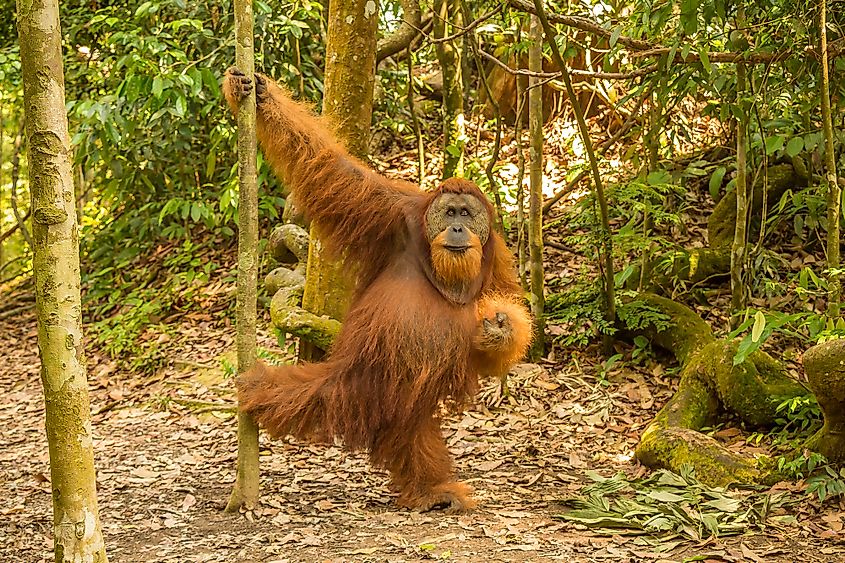
Tropical forests serve as the planet’s most diverse ecosystem, providing food and shelter to several plants, animals, birds, insects, and microorganisms. Deforestation leads to the removal of significant forest areas, destroying biodiversity, and the loss of natural habitats for several important species. The loss of large swathes of forest due to the numerous development projects results in the extreme fragmentation of wildlife habitats and an increase in human-wildlife conflicts. Habitat destruction eventually leads to the extinction of many species. It has been estimated that about 137 floral and faunal species are lost every day due to deforestation, which equals to the loss of about 50000 species annually.
Loss Of Valuable Medicines
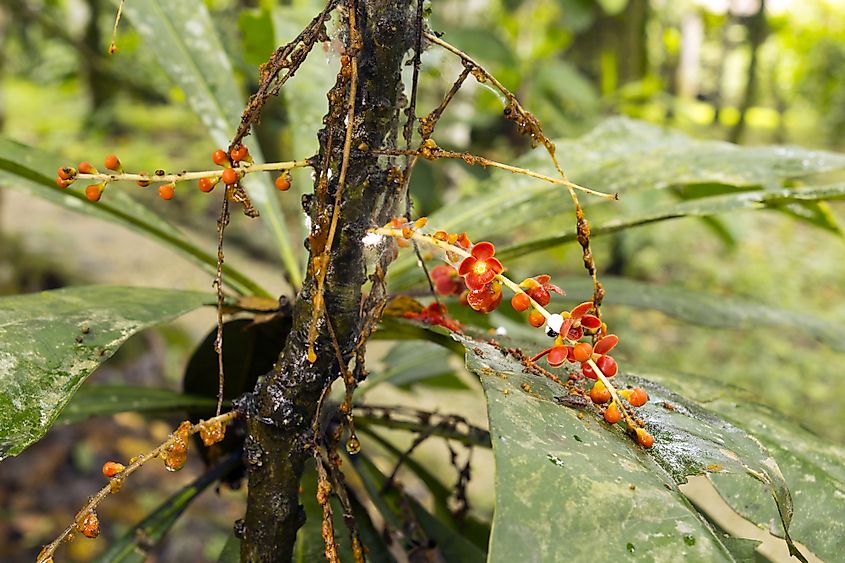
Several medical compounds are derived from plants that are found in the tropical rainforests. The widespread destruction of these forests due to deforestation results in the loss of several valuable species of medicinal plants. If deforestation continues at this rate, then the potential cures for many deadly diseases may become extinct, even before they have been discovered and analyzed by scientists.
Rise In Zoonotic Diseases
The large-scale deforestation due to anthropogenic activities brings the wild animals near humans and increases the risk of the transmission of different zoonotic diseases. The increased soil erosion due to deforestation has resulted in the formation of stagnant water pools, that serve as breeding grounds for mosquitoes which are the vectors of malaria and yellow fever. The loss of natural habitat for the fruit bats due to deforestation had facilitated the transmission of the Nipah virus in Malaysia. The emergence of the SARS-CoV2 virus that has caused the COVID-19 pandemic, has also been linked to habitat loss due to the expansion of the human population into the forest areas.
Disruption Of Livelihoods
Deforestation also leads to the disruption of the livelihoods of many indigenous people that live and depend to a high degree on the forest for their survival. These people are the worst affected by deforestation. In the long-term, however,
Solutions To Deforestation

The following strategies must be implemented by the administrative authorities to combat deforestation:
- Implementation of strict laws and security measures to prevent illegal logging.
- Carefully plan the construction of roads, dams, and other infrastructural projects to minimize the loss of forest area.
- Helping the farmers to use new eco-friendly agricultural practices and banning the use of inefficient agricultural practices.
- To facilitate the production and use of wood alternatives as an alternative to timber.
- New reforestation campaigns must be launched for the restoration of deforested lands.
- Proper awareness must be created among all citizens and the consumers must be encouraged to use more recycled products.
- Individuals can help to spread awareness about the negative consequences of deforestation and participate in tree-planting campaigns.











